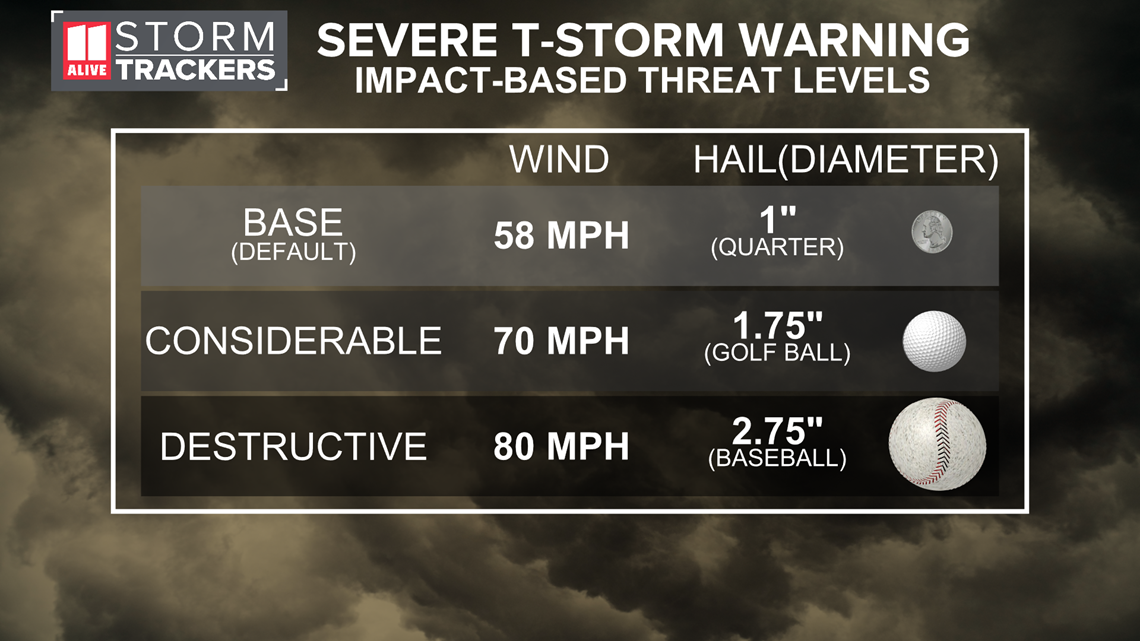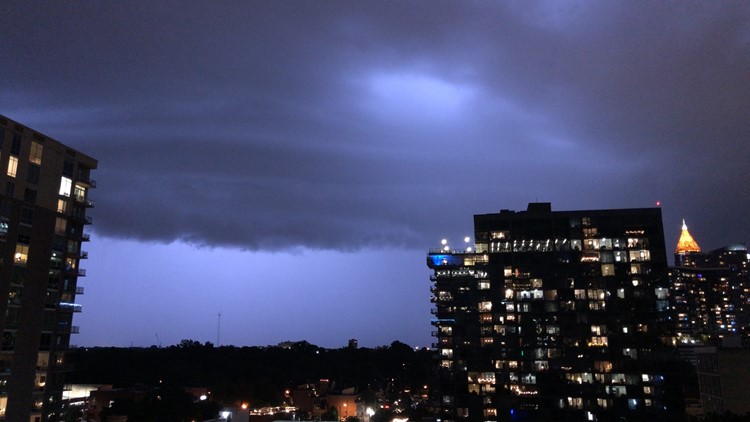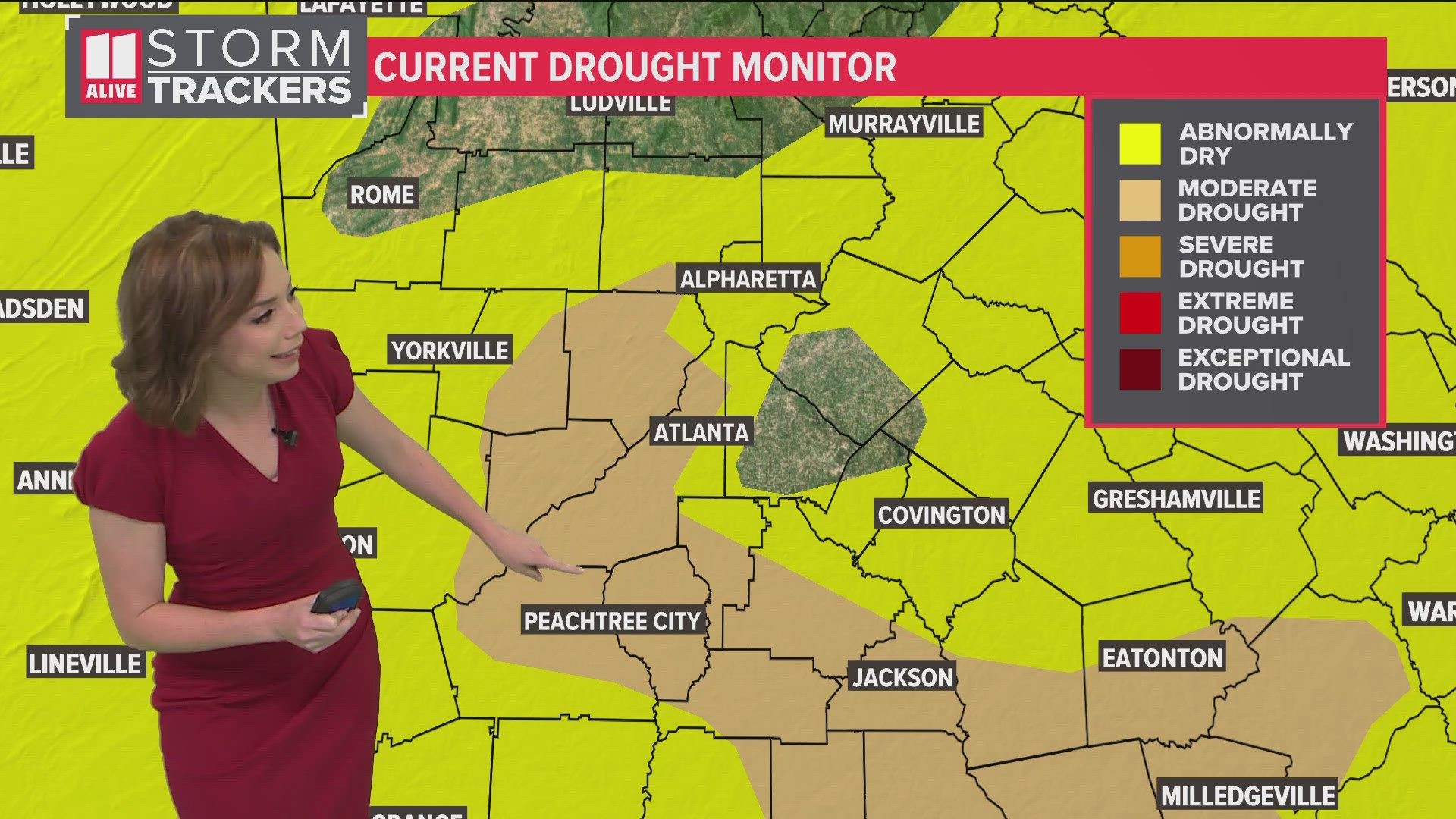ATLANTA — Georgia's Severe Weather Preparedness Week is the first week in February. This is an opportunity to refresh your memory of the aspects of severe weather that can impact you any time of year, as well as a time to remember your plan for sheltering from severe storms.
Monday - Family Preparedness Day
Being prepared for severe weather can help you respond to it in a calm but swift manner. On Monday, take a few minutes to remember where and how to take shelter from severe weather in your house and how you'll get warnings.
Often, severe weather hits at night and you may be asleep and not by the TV. Consider purchasing a life-saving NOAA weather radio and also enabling 'Wireless Emergency Alerts' on your phone. These new alerts can trigger your phone's alarm when a tornado warning, flash flood emergency, or new 'destructive' severe thunderstorm warnings are issued for your location.
When finding the safest place to shelter from a tornado, remember to go to the lowest level of your house and in an interior room, closet, or bathroom. The basement is always the safest place to go.
Tuesday - Thunderstorm Safety
We see our fair share of storms in Georgia in the spring and summer months. But even outside these seasons, we can have storms year-round in Georgia. Even non-severe storms can be dangerous, containing lightning, gusty winds, and small hail.
A severe thunderstorm is a storm with any or all of the following conditions: wind gusts of 58 miles per hour or greater, or one-inch diameter hail or greater. Severe thunderstorms can cause just as much damage as some tornadoes, and this damage can cover a larger area than tornadoes.
New in 2021, the National Weather Service added impact-based threat levels for warnings to bring awareness to the most intense of severe storms. When a thunderstorm has winds of 80 miles per hour or greater and/or baseball sized hail, it will now trigger a Wireless Emergency Alert to enabled phones.


Remember, a Severe Thunderstorm Watch means that the atmospheric conditions are present and severe storms can develop. Be prepared for the potential for severe storms but know it doesn't mean it's necessarily ongoing at the time. A Severe Thunderstorm Warning means that a severe storm is likely or imminent. That's when you need to take shelter inside and away from windows.
Wednesday - Tornado Safety
Tornadoes are rapidly-rotating columns of air that form from a rotating thunderstorm. Our peak tornado season across north Georgia is in the months of March, April and May. However, tornadoes can happen any time of year, not just in the spring.
Tornado strength is estimated based on the damage incurred by using the Enhanced Fujita Scale, or EF-scale. From EF-0 tornadoes with winds between 65 and 85 miles per hour to EF-5 tornadoes with winds in excess of 200 miles per hour, the damage from tornadoes can vary widely. This is why you need to always be prepared to take shelter in a secure place when a tornado warning is issued.
A tornado warning means that a tornado is imminent, likely or already occurring. This can be based on ground observations or based on radar data.
RELATED: Be prepared | Tornado safety tips
When sheltering from a tornado, remember to "duck and cover." Get down to the lowest level of your house and in an interior room, closet or hallway. The basement is best. Cover your head and neck. You can use a helmet, blankets, pillows, or a mattress to also give yourself protection.
There will be a statewide tornado drill at 9 a.m. Wednesday.
Thursday - Lightning Safety
A thunderstorm does not have to be severe to pose serious risks. Lightning is a very good example of this. Lightning is hotter than the surface of the sun and can be dangerous and sometimes deadly. Sadly, we lose Americans to lightning strikes every year. Roughly 80% of lightning fatalities are males, while 20% of lightning victims are female. The top activities during these lightning deaths are fishing, the beach, and camping.
Lightning is like a static electricity shock on really bad steroids. You've heard the saying "opposites attract," right? In lightning formation, negatively charged particles at the bottom of the storm are attracted to positively charged particles on the ground. When this difference in charge gets great enough, a flow of negative charge from the cloud flows to the earth in a "stepped ladder." The return stroke is what we see - a big lightning bolt.
Thunder happens due to the the rapid heating of the air, which creates a shock wave through the atmosphere. You can't have thunder without lightning.
Remember, "when thunder roars, go indoors." Whenever you hear thunder, you are close enough to be struck by lightning.
Friday - Flood Safety
Flooding is the No. 2 weather-related killer in the United States each year behind heat.
Water is powerful. It only takes six inches of swiftly moving water to knock you off your feet. One foot of moving water can float a small car, while two feet of moving water can float a larger truck or SUV.
If you ever come across a flooded roadway, remember 'turn Around, don't drown.' You don't know how deep the water is. You don't know how quickly the water is moving. You don't know what's in the water -- including downed live wires. And you don't know what the integrity of the road is underneath the water.



